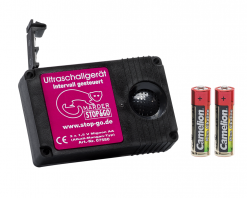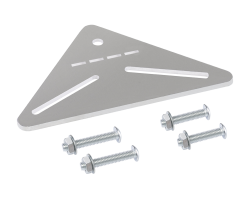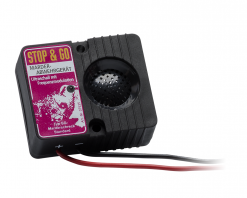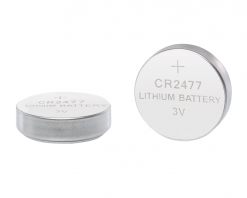Marten defense for electric cars – What should you look out for and how does it differ from combustion engines?
Table of contents
Electric cars and martens
There are already around 1.01 million (source: Statista) on German roads today (as of 01/2023). The trend towards e-mobility is gaining momentum and, thanks to government subsidies, experts estimate an increase to almost 11.5 million electric cars by 2030. This is not a big change for martens. The animals do not shy away from electric cars. Electric cars do away with many components that are particularly susceptible to bites in petrol cars, but the power cables remain. However, these are 400-volt high-voltage cables, which are expensive to repair if damaged.
Are there marten bites on electric cars?
Yes, there are many marten bites on electric cars. As solitary animals, martens like to explore their surroundings. The engine compartment of a car is a good place to hide from noise, light and people. The marten leaves behind an odor, also known as a scent mark. If the car is moved from one area into the territory of another marten, its defense instinct or fighting instinct is triggered. Its defense instinct is to remove the scent mark of the other marten from the vehicle with all its might.
The special feature of electric cars is that they are often located at different charging stations and therefore always spread new scents. Autobild even refers to them as marten magnets. By changing the charging station, the electric cars are always in different marten territories. And this attracts competitors and awakens their defensive instincts.
Are marten bites more expensive with electric cars?
Damage to electric cars can be particularly expensive. In contrast to combustion engines, electric cars carry significantly higher voltages. Martens mainly chew through cables and hoses in the bodywork area. Electric cars probably have the advantage here that they generally offer fewer rubber hoses and cables in the engine compartment as marten fodder. In electric cars, there are two exposed areas where martens make themselves at home.
Firstly, the drive shafts of electric cars are fitted with one or two rubber bellows that protect the suspension mechanism. If the marten damages this rubber, the grease escapes and the wheel suspension collapses due to the increased friction. As with combustion engines, however, it is the bitten cable material that causes the most damage.
A gnawed cable is extremely annoying in a combustion engine, but the repair usually “only” costs between 150 and 300 euros. Many people can still get over this. This is not the case with electric cars, however. The Allianz Center for Technology has determined that A high-voltage cable that has been bitten by a marten can no longer be repaired today. In this case, the entire cable set has to be replaced. And this can cost up to €7,000. For a fairly inexpensive electric car such as the VW e-Up or the Renault Zoe, a marten bite is therefore close to a total economic loss.
The high difference in damage between an electric car and a combustion engine is due to the cables installed and the structure of the car. Electric cars are operated with up to 400 volts – in other words: high voltage current! By comparison, only 12 volts flow through the cables of conventional petrol cars. If the cables are damaged, the entire wiring harness must be replaced for safety reasons. As this work can only be carried out by specially trained experts, the costs are high.
What is the best marten repellent for electric cars?
Marten protection is even more important for electric cars than for conventional vehicles. Due to the higher amounts of damage, electric car owners should have professional marten protection installed. According to statistics, marten damage is still one of the most common causes of partial accidental damage to motor vehicles. Car owners who frequently park their vehicle outdoors are exposed to an increased risk. They should protect themselves with marten repellents – in the following order.
Steps towards marten protection for electric cars
Step 1: Remove marten scent mark from electric cars
First, the engine compartment should be sprayed with STOP&GO scent mark remover. The concentrate can be used to remove the smell of other martens from electric cars. Because if you want to successfully drive away martens, you must first remove the scent mark. Since washing the engine of an electric car is out of the question, the completely harmless STOP&GO scent mark remover is used here. Spray on, leave on briefly, rinse off – and you’re done. The cleaning foam is harmless to plastic, rubber and paintwork and is therefore particularly user-friendly.
Step 2: Fitting a marten repellent device for electric cars
There are many ways to keep martens away from an electric car. Our recommendation is a combination device consisting of high voltage and ultrasound. For example, the STOP&GO 8 PLUS-MINUS CLIP high-voltage device with ultrasound offers ideal protection.
The harmless but long-lasting electric shock is an effective means of keeping martens away from the car permanently. The tested and certified high-voltage systems are simply installed at the top of the engine compartment for this purpose. The principle is the same for all systems: a power supply unit and several stainless steel contact plates are installed in the engine compartment and connected to a power cable. If the marten touches one of the contact plates on the electric car, it receives an electric shock – similar to the pasture fence principle – and quickly runs away.


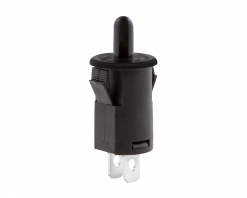 STOP&GO bonnet contact switch
STOP&GO bonnet contact switch 





